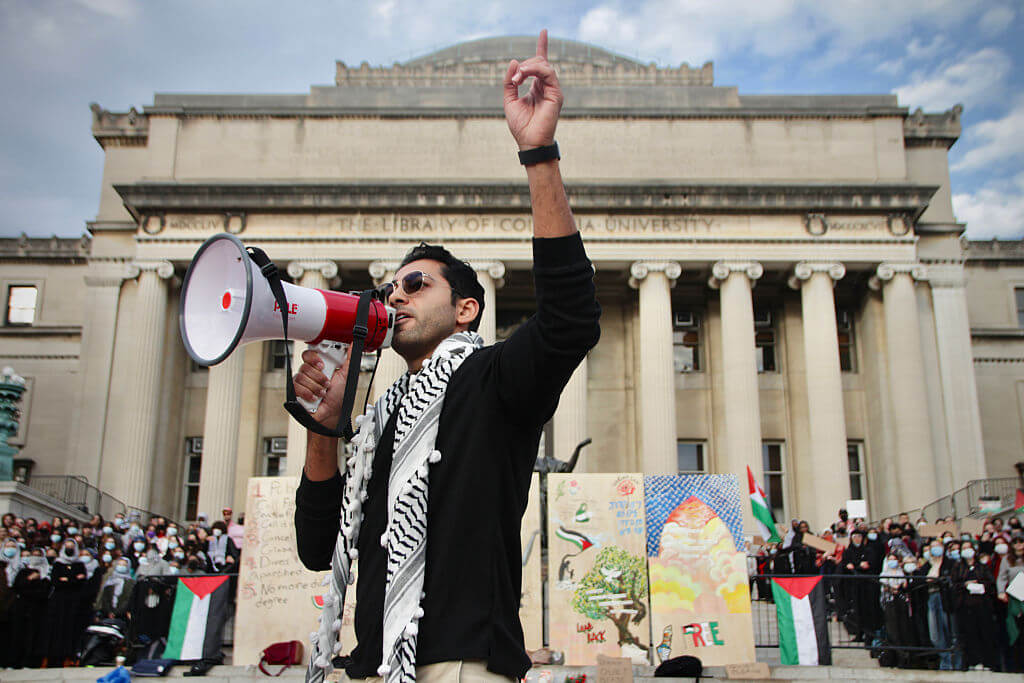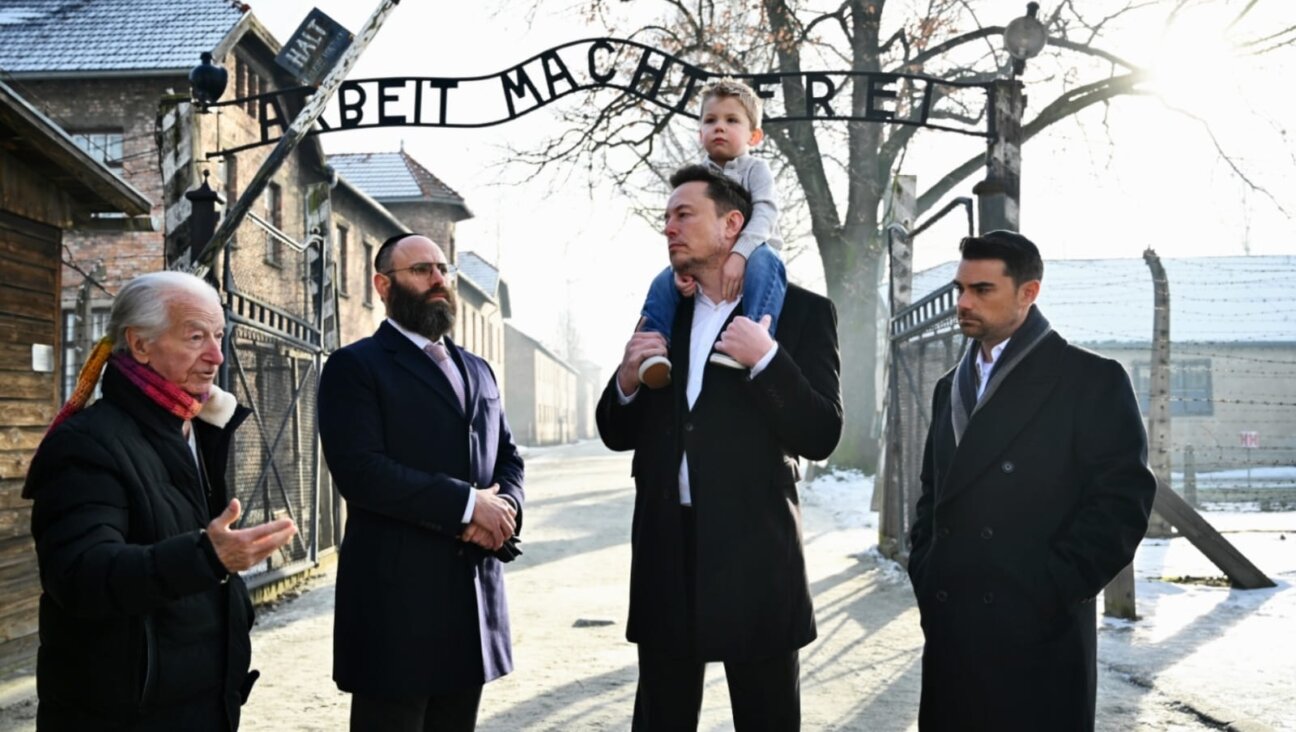Lives –– and Legacies –– in Law
There is an age-old connection between Judaism and law. For centuries, rabbis and other Jewish scholars studied, re-studied and ceaselessly interpreted the Talmud, producing a vast corpus of juridical writing, which to many was the very heart of the Jewish religious tradition. Jews have always prized the scholarship of judges and lawyers in their own tradition. When antisemitic occupational restrictions lessened, they were drawn to the learned professions of the countries in which they lived, including the United States. Law figured prominently among those professions. Law became and remains an avenue of social mobility, a field in which intellectual achievement is rewarded. And, as it evolved in the United States, law also became a bulwark against the kind of oppression Jews historically have encountered and endured. Thus, Jews in large numbers became lawyers in the United States, and some eventually became judges. The best of those lawyers and judges used the law not only for personal gain, but to secure justice for others. So it was with my predecessors, the first five Jewish Justices of the Supreme Court. To celebrate the 350th anniversary of Jews in America, I will recall in quick snapshots their lives in the law, and the legacies they left.
The first Jew to be seated on the Court was Louis Brandeis, but he was not the first to be considered for the job. In fact, the first Jew offered a Supreme Court post turned the job down. In 1853, Judah Benjamin declined the nomination of President Fillmore. Benjamin had just been elected U.S. Senator from Louisiana, and he preferred to retain his Senate seat. Benjamin later became a leader in the Confederacy, ultimately serving as Jefferson Davis’ Secretary of State. When the South lost the Civil War, Benjamin fled to England, surviving a peril-filled journey. There, he started over, and became an acclaimed barrister. The London Times, in an obituary, described Benjamin as a man with “that elastic resistance to evil fortune which preserved [his] ancestors through a succession of exiles and plunderings.”
Thus, the distinction of coming first fell to Brandeis. During his days at the bar, Brandeis was sometimes called “the people’s attorney,” descriptive of his activity in the great social and economic reform movements of his day. Raised in Louisville, Ky., Brandeis already showed signs of greatness when he was graduated from Harvard Law School in 1877 at age 20, with the highest scholastic average in that law school’s history. Practicing law in Boston, he rose to fame as one of the champions of the progressive era, a leading defender of trade unions, women’s suffrage and business ethics. He helped shape President Wilson’s “new freedom” economic doctrine and was appointed to the Court by Wilson in 1916. President Franklin Delano Roosevelt, among others, called Brandeis “Isaiah,” and admirers, both Jewish and Christian, turned to the scriptures to find words adequate to describe his contributions to American constitutional thought.
Brandeis was not a participant in religious ceremonies or services, but he was an ardent Zionist, and he encouraged the next two Jewish Justices — Benjamin Cardozo and Felix Frankfurter — to become members of the Zionist Organization of America. A Brandeis scholar, Melvin Urofsky, commented that Brandeis brought three gifts to American Zionism: organizational talent; an ability to set goals and to lead men and women to achieve them, and above all, an idealism that recast Zionist thought in a way that captivated Jews already well-established in the United States. Jews abroad who needed to flee from antisemitism, Brandeis urged, would have a home in the land of Israel, a place to build a new society, free from the prejudices that marked much of Europe; Jews comfortably situated in the United States, in a complementary way, would have a mission, an obligation to help their kinsmen build that new land.
When Brandeis retired from the Supreme Court in 1939, at age 83, his colleagues wrote in their farewell letter:
That influence continues to this very day.
Brandeis served for a time with Benjamin Cardozo, who was appointed to the Court in 1932. Tutored in his youth by Horatio Alger, Cardozo learned to treasure words and to thrive on hard work; it is rightly said that he approached his calling to the legal profession with “ecstatic consecration.” Cardozo’s fine hand adjusted the common law to meet the needs of an evolving society. He served with unmatched distinction for 18 years on New York’s highest court — the last five as Chief Judge — before President Hoover named him to the U.S. Supreme Court. “What doth the Lord require of thee,” the prophet Micah said, “but to do justice and to love kindness and to walk humbly with thy God.” Cardozo’s life and work exemplified that instruction. As Arthur L. Goodhart, author of “Five Jewish Lawyers of the Common Law,” wrote: “It has been said that genius consists in the ability to make clear the obvious which has never been understood before.” In this sense, Cardozo’s opinions and other writings were indeed works of genius.
Cardozo remained a member of New York’s Spanish and Portuguese Synagogue all his life. Like Brandeis, however, he was not a participant in religious observances, and his seat was mainly used by relatives. Still, he was not altogether inactive: As a young lawyer, he once gave an address in which he urged the congregants to reject a proposal to end the separation of women from men at services. Would he persist in that position were he with us today, who can say?
Cardozo died in 1938, after only six years on the Supreme Court. The Chief Justice at that time, Charles Evans Hughes, said of him:
Felix Frankfurter, appointed by Roosevelt in 1939 after the untimely death of Cardozo, had been a Harvard Law School professor for 25 years. No cloistered academic, he was an ardent advocate of the right of labor to organize, a founder of the American Civil Liberties Union, a member of a National Association for the Advancement of Colored People advisory lawyers committee and a defender of Sacco and Vanzetti, the anarchist shoemaker and fishmonger accused of murder in Massachusetts. As a Supreme Court Justice, Frankfurter was criticized in some quarters for excessive judicial restraint. At the same time, he was the first to employ an African-American law clerk, William T. Coleman Jr., in 1948. (Coleman remains, to this day, one of the bright lights of the legal profession.) Frankfurter was also the Justice who wrote: “[B]asic rights do not become petrified as of any one time … . It is of the very nature of a free society to advance in its standards of what is deemed reasonable and right.”
After Frankfurter retired in 1962, Arthur Goldberg joined the Court. A Kennedy appointee, Goldberg had been counsel to labor unions at a time when strikers were prey to the harassment of armed thugs. A longtime legal adviser to the steelworkers union, he was considered the architect of the trade union merger that created the AFL-CIO, at the time the most powerful labor organization in the world. Goldberg was the only Jewish Justice to have experienced childhood poverty (his father, who died when he was eight, sold produce in Chicago, from a wagon pulled by a blind horse). Goldberg was the sole member of his large family to continue his education beyond grade school. And, unlike Brandeis, Cardozo and Frankfurter, Goldberg was a keeper of religious ceremonies. At Passover seders in his home, Goldberg would relate the story of the Israelites in Egypt to the stories of all the world’s oppressed and outcasts. My colleague, Justice Stephen Breyer, was among the few privileged to clerk for Justice Goldberg during Goldberg’s less-than-three-year tenure on the Supreme Court. He resigned in 1965 to become the U.S. Ambassador to the United Nations.
(I recently came upon a story Goldberg once told the congregation of Temple Emanu-El in Honolulu in the early 1960s. The Justice was visiting his mother, who had become active in several Jewish organizations. He was sleeping late one morning when the telephone rang for him. His mother answered the phone and asked, “Who’s this?” The caller replied, “This is the President.” Goldberg, barely awake, heard his mother inquire, “Nu, president from which shul?”)
Succeeding Goldberg in 1965, Johnson-appointee Abe Fortas had been a steadfast defender of people smeared by Senator Joseph McCarthy at the height of the Cold War Red Scare, and counsel to people who had nowhere else to turn. Although religious observance was not a prime part of Fortas’ family’s life, it was thanks to a scholarship established by a rabbi in his hometown of Memphis, Tenn., that this brilliant man was able to attend college. His arguments in the 1963 Gideon v. Wainwright case, yielding a decision that guaranteed poor defendants the right to counsel in criminal prosecutions, secured his legacy as a shaper of the rights of every person, no matter his station. His career on the Court was cut short after Johnson nominated him to succeed Earl Warren as Chief Justice in 1968. The nomination was filibustered by a coalition of Republicans and southern Democrats, and a year later, under attack for ethical lapses, he resigned from Court service.
With Fortas’ departure, the tradition of a “Jewish seat” on the Supreme Court ended. Of course, Justice Breyer and I are Jews. In contrast to our five Jewish predecessors on the Court, however, no one regards either one of us as filling a “Jewish seat.” Jews in the United States today face few closed doors and do not fear letting the world know who they are. Both Justice Breyer and I take pride in and draw strength from our heritage, but our religion was not relevant to our appointments.
Goldberg once said: “My concern for justice, for peace, for enlightenment… stem[s] from my heritage.” The other Jewish Justices could have reached the same judgment. Law as protector of the oppressed, the poor, the minority, the loner, is evident in the work of Justices Brandeis, Cardozo, Frankfurter, Goldberg and Fortas. The traditional commandment “Justice, justice shalt thou pursue” is a strand that ties them together. Those words, I might add, both in English and in Hebrew, are posted on a wall in my chambers, an ever-present reminder both of what judges must do “that [they] may thrive,” and of the heritage to which I am fortunate to be linked.
It is fitting to end this essay by quoting from an August 1790 letter exchange. That summer, the Hebrew Congregation of Newport, R.I., welcomed George Washington
on his visit to their city with these words:
Washington replied: “It would be inconsistent with the frankness of my character not to avow that I am pleased with your favorable opinion of my administration and fervent wishes for my felicity.” Our first President closed his letter with these words, adapted from the prophet Micah:
To that prayer, may we ever say Amen.
In 1654, a group of 23 Jewish refugees from the Portuguese Inquisition in Brazil landed at the Dutch colony of New Amsterdam, on Manhattan Island. Though the colonial governor, Peter Stuyvesant, tried to expel them, his superiors in the Netherlands overruled him and granted the newcomers permission to stay. Many followed, and they thrived.
Thus, as we rang in 2004, we also ushered in the 350th anniversary of American Jewry, the largest and most successful Jewish community in history. To mark the occasion, the Forward is embarking on a special project: Once a month throughout the year, a section of the paper will be devoted to a selected topic in American Jewish history, from religion and politics to literature, sports, money, Zionism and more. We begin with a section on rights and liberties, introduced here by Supreme Court Justice Ruth Bader Ginsburg.
The Forward is free to read, but it isn’t free to produce

I hope you appreciated this article. Before you go, I’d like to ask you to please support the Forward.
Now more than ever, American Jews need independent news they can trust, with reporting driven by truth, not ideology. We serve you, not any ideological agenda.
At a time when other newsrooms are closing or cutting back, the Forward has removed its paywall and invested additional resources to report on the ground from Israel and around the U.S. on the impact of the war, rising antisemitism and polarized discourse.
This is a great time to support independent Jewish journalism you rely on. Make a gift today!
— Rachel Fishman Feddersen, Publisher and CEO
Support our mission to tell the Jewish story fully and fairly.
Most Popular
- 1

Fast Forward Ye debuts ‘Heil Hitler’ music video that includes a sample of a Hitler speech
- 2

Opinion It looks like Israel totally underestimated Trump
- 3
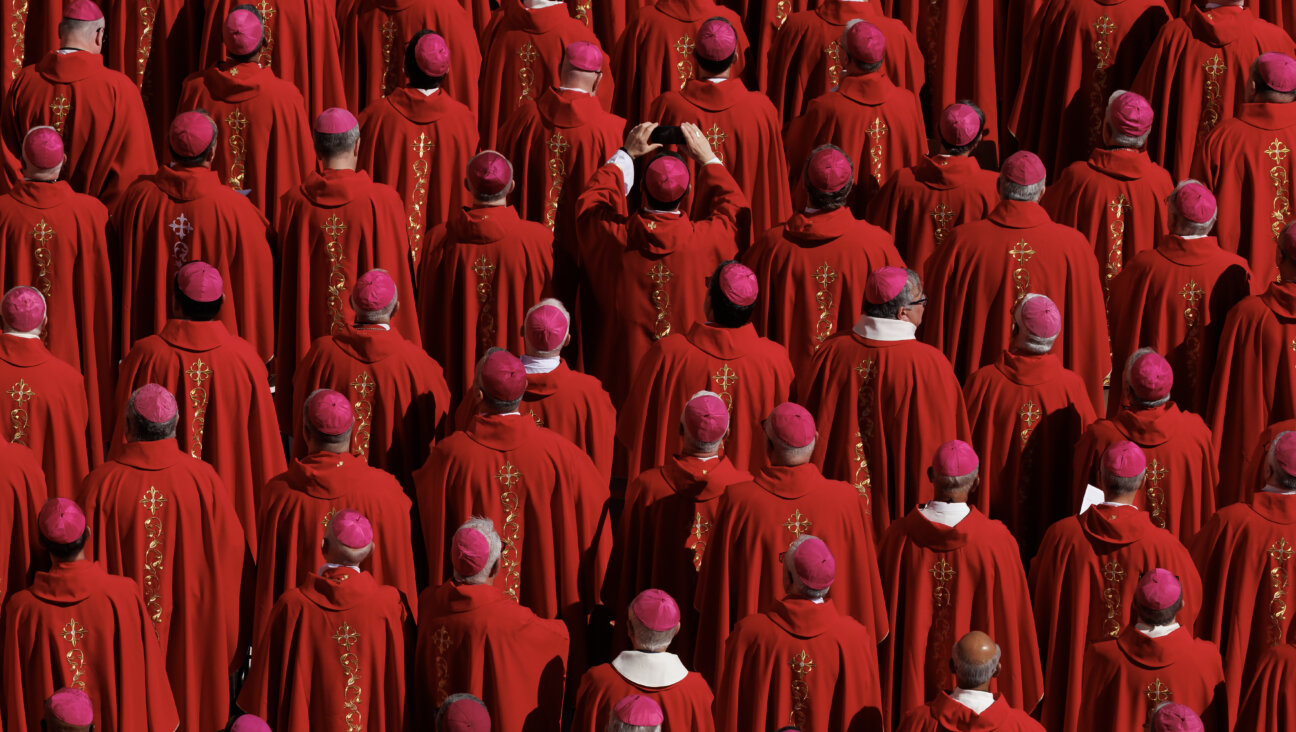
Culture Cardinals are Catholic, not Jewish — so why do they all wear yarmulkes?
- 4

Fast Forward Student suspended for ‘F— the Jews’ video defends himself on antisemitic podcast
In Case You Missed It
-

Culture Should Diaspora Jews be buried in Israel? A rabbi responds
-
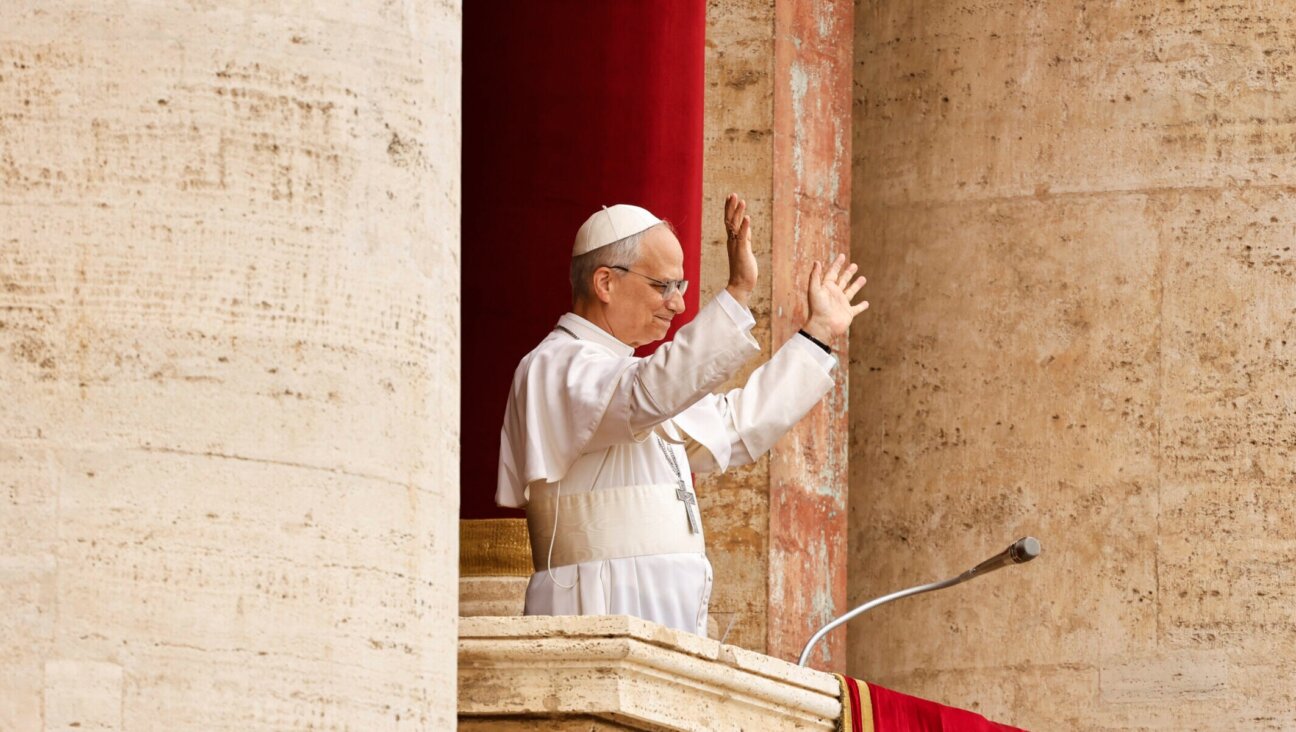
Fast Forward In first Sunday address, Pope Leo XIV calls for ceasefire in Gaza, release of hostages
-

Fast Forward Huckabee denies rift between Netanyahu and Trump as US actions in Middle East appear to leave out Israel
-
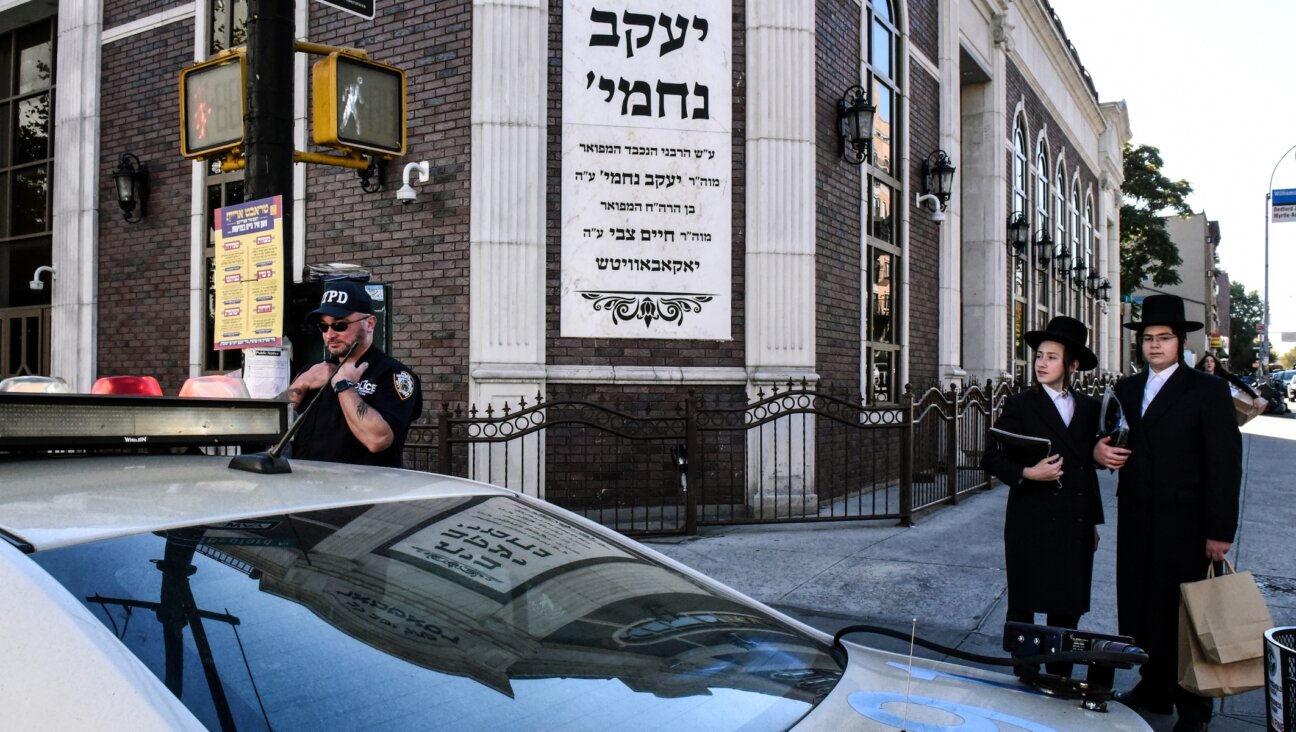
Fast Forward Federal security grants to synagogues are resuming after two-month Trump freeze
-
Shop the Forward Store
100% of profits support our journalism
Republish This Story
Please read before republishing
We’re happy to make this story available to republish for free, unless it originated with JTA, Haaretz or another publication (as indicated on the article) and as long as you follow our guidelines.
You must comply with the following:
- Credit the Forward
- Retain our pixel
- Preserve our canonical link in Google search
- Add a noindex tag in Google search
See our full guidelines for more information, and this guide for detail about canonical URLs.
To republish, copy the HTML by clicking on the yellow button to the right; it includes our tracking pixel, all paragraph styles and hyperlinks, the author byline and credit to the Forward. It does not include images; to avoid copyright violations, you must add them manually, following our guidelines. Please email us at [email protected], subject line “republish,” with any questions or to let us know what stories you’re picking up.








